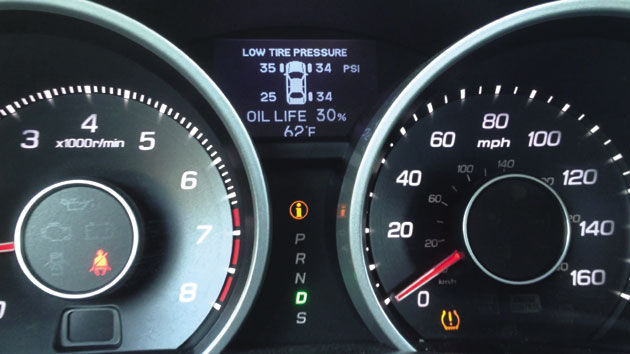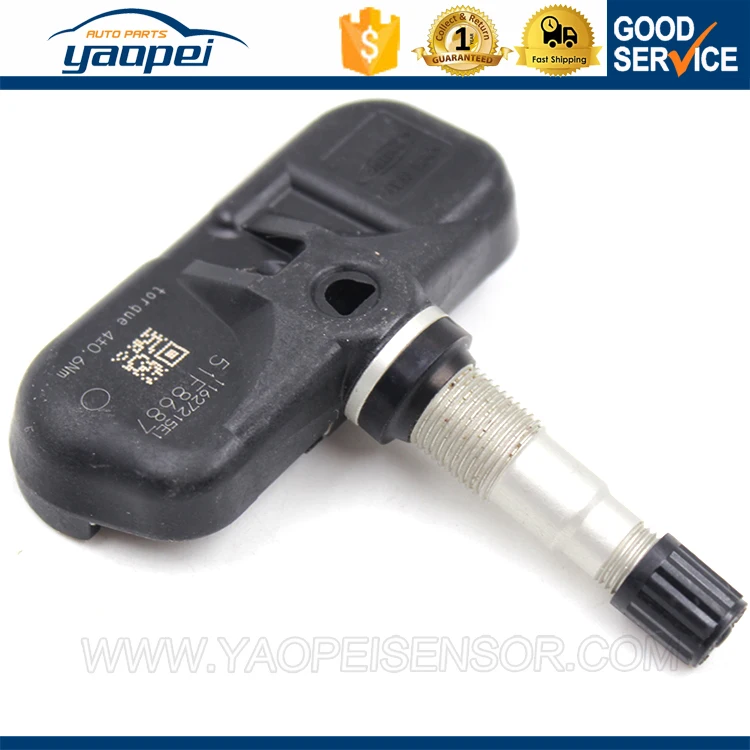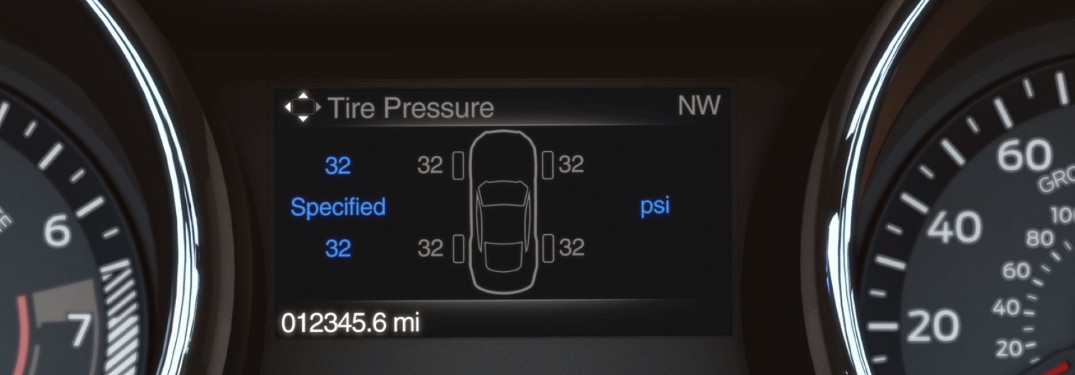Hide Show
Sell/Trade Us Your Car | Click Here To Learn More
Your tire pressure light provides a critical reminder to restore the pressure in your vehicle's tires when it gets low. You should only attempt to reset the light after first addressing the tire pressure in every tire. Once your tires are at the appropriate pressure, the light may go off on its own. If it doesn't go off right away, driving at 50 mph for about 10 minutes should help the tire pressure sensor reset.
If the tire pressure light is still on, there are a few more tricks you can try:
TPMS stands for Tire Pressure Monitoring System. The tire pressure light is one component of this electronic system, providing a visual alert when your tire pressure is low. The TPMS monitors tire pressure using either an indirect or direct method.
An indirect TPMS measures the rate of revolution for each wheel. If a wheel starts spinning faster than anticipated, the system signals to your vehicle's computer that something is amiss with the tire rotation, and your tire pressure light comes on. You must manually reset the monitor in an indirect TPMS system.
A direct TPMS uses pressure monitoring sensors in each tire to monitor tire pressure exactly. This is a more accurate alternative to an indirect TPMS system. The batteries inside these sensors will last for about 10 years. Direct TPMS systems reset automatically after tire inflation or rotation. You do need to have these sensors resynchronized when you get new tires, which requires a special tool.
Yes, cold weather will affect the air pressure in your tires. Your tires lose one or two pounds per square inch (PSI) for every 10 degrees that the temperature drops. Cold air condenses while warm air expands. Therefore, the colder air in your tires will take up less space in lower temperatures.
You may find that your TPMS light is only illuminated for a short time in the morning on particularly cold days. After about 20 minutes of driving, the air will often warm up and expand, restoring proper pressure in your tires. If the light stays on after 20 minutes on the road, you should add air to your tires as needed to restore the proper pressure. Low tire pressure is hazardous for your vehicle regardless of the cause.
If the light stays on after 20 minutes on the road, you should add air to your tires as needed to restore the proper pressure. Low tire pressure is hazardous for your vehicle regardless of the cause.
When the tire pressure monitor light is on, the first thing you should do is check the pressure in each of your tires, including the spare. Check the manufacturer's recommendation to determine the appropriate pressure for each tire. This is typically between 30 and 35 PSI but may vary. You should measure tire pressure when the tires are cold, which means they have not been driven in the last three hours.
To check the pressure, simply unscrew the valve cap and insert a tire gauge into the valve stem. The gauge will provide a clear reading. Replace the valve cap when you're finished. If your tires are all at the appropriate pressure, there's a malfunction with your TPMS. Bring your vehicle to an authorized dealership service center to diagnose and resolve the issue.
If the tire pressure monitor light is on, you should check your tire pressure as soon as possible. Low tire pressure creates a serious hazard on the road. According to the National Highway Traffic Safety Administration, 738 people died in tire-related crashes in 2017. When tire pressure is low, the tire has more contact with the road. This may cause the tire to overheat, leading to tread separation, excessive tire wear, or a blowout.
Low tire pressure also wreaks havoc on your fuel efficiency. You can save up to 11 cents per gallon simply by keeping your tires properly inflated. You'll also save money on tire replacements with adequate inflation. Keeping your tires properly inflated can add 4,700 miles to the tire's average lifespan.
The tire pressure monitor light gives you valuable information and should not be ignored.
You do not necessarily need to have your TPMS sensors replaced with new tires, but this is a good time to check them and make sure they're still in good condition. If you have an indirect TPMS system, your mechanic will need to manually reset the sensors after changing your tires. If you have a direct TPMS system, no additional maintenance is required to reset the system.
If you have an indirect TPMS system, your mechanic will need to manually reset the sensors after changing your tires. If you have a direct TPMS system, no additional maintenance is required to reset the system.
A new TPMS system will typically last for about 10 years before the batteries run out. If you have an older vehicle, you may need new sensors every five or six years. Your mechanic can advise you on the best time to replace TPMS sensors for your vehicle. When new sensors are installed, the system must relearn the location of each tire, which requires a detailed series of technical procedures. You should leave this task to a professional.
If you need tire service for your Toyota, come to Kings Toyota for prompt, reliable service. Our highly-trained technicians are equipped to assist with any type of tire issue, whether you need new tires or have a malfunctioning tire pressure sensor light. Make your appointment today.
First Name*
Last Name*
Contact Me by*
EmailPhone
Procedure using another Properly Formatted Scan Tool


Note: Certain models can store two sets of sensor IDs. A switch, labeled Main/2nd , can be found inside the right side of the glove box. Make sure the switch is set to Main prior to starting the reset procedure. If the reset procedure fails, try setting the switch to 2nd and repeat the reset procedure.
If you see an error on the screen while performing an OBDII Relearn, check to make sure that the vehicle is in the ON position (not ACC). Also make sure all the connections are secure.
Errors E1 and E2 – Reading Communication Errors
Make sure vehicle is ON and not ACC Check for secure connection.
Errors E3 and E6 -Writing Communication Errors
Make sure vehicle is ON and not ACC Check for secure connection.
Error E4 – Wrong Set Error
Many Lexus vehicles can store more than one set of TPMS ID’s in ECU. Toggle the vehicles selected set to the MAIN set. Then retry OBDII Relearn.
Then retry OBDII Relearn.
Error E5 – Spare Tire Error
If you receive this error, and you did not upload a sensor ID for the spare, then this vehicle requires a spare. If you did upload a spare, but you received this error, then the vehicle does not store the ID in the ECU for the spare tire.
Tags: Lexus TPMS Reset, tpms reset
You are the proud owner of a recent car, the joy of tactile gadgets, integrated technology should bring you the ease and comfort of using your Lexus RX, which is important, however, that says technology talks about electricity, and, like we all, unfortunately, know sometimes the problem is fix. Today we will look at the tire pressure sensor and exactly how to reset the tire pressure sensor on the Lexus RX so that this indicator never appears on the dashboard again. To do this, we will divide our content into two parts: first we will focus on the general case when the tire pressure indicator appears and the method to follow, and then on the case of the tire indicator that remains on despite the tires being inflated. So, how to reset this tire sensor on Lexus RX.
So, how to reset this tire sensor on Lexus RX.
First, we will focus on the general approach to reset a tire sensor on a Lexus RX which, if it lights up, here are the basic simple steps:
 on the Lexus RX. The indicator light should have gone out or gone out after a few seconds. . In case this is not the case, we recommend that you go through the next section.
on the Lexus RX. The indicator light should have gone out or gone out after a few seconds. . In case this is not the case, we recommend that you go through the next section. Now that you have tried the normal method of removing the tire pressure sensor on the Lexus RX, and it didn't work, we'll move on to the second alternative, which is to have the tires on my Lexus RX well inflated and I still want that light to go away. Most likely, this means that you have Faulty tire pressure sensor. This will require to reset the value on your car's dashboard. However, be careful not to do this while driving as pressure fluctuations will affect your pressure sensors. Generally speaking, you need to go through the car configurations, then you should find the option to diagnose inflation or "deflation detection", once on this tab, you should hold the select button or reset button according to the year of your Lexus. RX until you see a message on the car console confirming that the reset has been taken into account (this usually takes a few seconds). You can now turn off the ignition and restart your Lexus RX to see if the tire pressure light has gone out.
RX until you see a message on the car console confirming that the reset has been taken into account (this usually takes a few seconds). You can now turn off the ignition and restart your Lexus RX to see if the tire pressure light has gone out.
If, despite your reset, the tire pressure indicator on your Lexus RX does not turn off, then the wisest solution is to go to the workshop, rather In total, it is tire pressure sensor on the valve that is faulty or faulty on your Lexus RX . Keep in mind that in general the unit price is around 120 euros. Another option that some people prefer to use because the problems may recur in some series is to disable the sensors with your carrier and diagnose your vehicle. However, this procedure is not recommended as it may result in improper handling and malfunction of your Lexus RX. Now you have all the keys in your hands to know how to reset the tire pressure sensor on the Lexus RX.
If you have any further questions about the Lexus RX, do not hesitate to contact us. Lexus RX category.
You are the proud owner of a recent car, the joy of tactile devices, integrated technologies should nevertheless bring you the comfort of using your Lexus ES, which is to say that technology is talking about electricity, and, as we all, unfortunately, know sometimes there are violations to resolve. Today we will focus on the tire pressure sensor and specifically on how to reset the tire pressure sensor on a Lexus ES so that the indicator is no longer on the dashboard. To do this, we will divide our content into two parts: first of all, we will focus on the traditional case of the appearance of a tire pressure indicator light and the subsequent process, and then on the case of a tire indicator light that remains on even if the tires are inflated, so how to reset this sensor tires on Lexus ES.
First, we will concentrate on the typical technique for resetting a tire sensor on a Lexus ES, which if it lights up, here are the basic methods:
 The indicator should disappear or turn off after a few seconds. . If it turns out that this is not the case, we advise you to go through the next section.
The indicator should disappear or turn off after a few seconds. . If it turns out that this is not the case, we advise you to go through the next section. Now that you have used the basic process of removing the tire pressure sensor on a Lexus ES and it didn't work, we'll move on to the second alternative, which is to have the tires on my Lexus ES well inflated and I still want that light to go away. This almost certainly means you have Faulty tire pressure sensor. This will require to reset the value on your car's dashboard. However, be careful not to do this while driving as pressure fluctuations can damage your pressure sensors. Basically, you have to go through the car settings, then you have to find the option to diagnose inflation or "deflate detection". While on this tab, you must hold the select button or the reset button depending on the year of your Lexus.